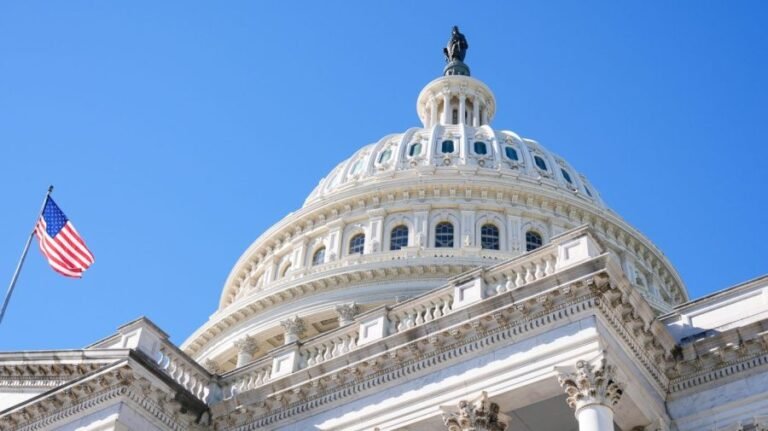
We are in a war over AI dominance. One of the gravest threats is China’s attempt to control global AI systems.
Indeed, China has manipulated inputs, distorted tech markets, stolen intellectual property, weaponized supply chains, and threatened Taiwan — all of which could destabilize global chip manufacturing and, by extension, secure its hegemony over all aspects of the AI market.
And guess what? American firms are enabling it. U.S. companies continue to sell directly to Chinese-state owned entities, many of which have direct ties to the country’s military. And American tech giants like Apple “import products containing a host of different chips” from the region, strengthening China’s industrial base at our expense. Chips matter a great deal as they provide essential processing power behind AI and pretty much everything else in modern America.
AI is integral to China’s “intelligentized warfare” campaign which aims “to use AI to directly control the will of the highest decision-makers, including the president, members of Congress, and combatant commanders, as well as citizens.” Scholars believe China will use AI to commit “intrusions by hackers for the purpose of stealing information.”
But President Trump is taking action. Within days of his 2025 Inauguration, the White House unveiled America’s AI Action Plan to remove barriers to America’s leadership in AI. Among other things, the plan calls for expedited permits for chip fabs to promote the rapid buildout of data centers. But today, too many U.S. fabs are sitting underutilized. Why? The vast majority of our chips are imported. That must change.
Any time now, Trump will formally introduce the chip import tariff that he teased over the summer. A 100 percent tariff should be a driver of change, but we can’t count on the tariff alone.
One reason why: Big Tech.
To start, Big Tech companies have gone out of their way to develop China’s AI capabilities. During the Trump and Biden administrations, NVIDIA side-stepped the U.S.’s restrictions on selling AI chips to China. Apple has trained around 28 million of China’s labor market to develop its domestic tech production to do low-skilled work that could go to Americans and have even spent $55 billion per year to perform those trainings.
To be sure, tech companies are not our national champions. They will always put profit over country. NVIDIA’s CEO Jensen Huang even said that those pointing out China’s clear threat to Americans or even being skeptical of China’s actions make such a person “unpatriotic.”
Now that Trump is poised to act, Big Tech is moving swiftly to protect themselves. And they’re following his cue. He said companies who manufacture in the U.S. or plan to do so will be exempt. What happened next should surprise no one: Tech CEOs raced to 1600 Pennsylvania Avenue to curry favor with the man in charge and make fantastical claims of investing $1.75 trillion in our markets.
But will they really deliver? I wouldn’t hold my breath.
For instance, Apple made a similar promise in Trump’s first term. Apple, of course, failed to make good on those commitments. In Trump 2.0, Apple is reinstituting its same strategy when pledging a $600 billion commitment. Apple’s plan includes loose promises to open a few manufacturing plants to make portions of phones. Here’s the problem, those commitments could not possibly amount to anywhere near $600 billion. The only way the math works here is if Apple plans to, as it did in Trump 1.0, buy back its own stock, which does nothing to reshore manufacturing or promote our own AI systems.
That’s why the administration’s approach to chip import tariffs must account for guardrails and enforcement. Commerce Secretary Howard Lutnick reportedly backs a chip-for-chip framework which would do just that. Lutnick’s “goal is to have chip companies manufacture the same number of semiconductors in the U.S. as their customers import from overseas producers. Companies that don’t maintain a 1:1 ratio over time would have to pay a tariff.”
If companies want to avoid the new tariffs, they need to do two things: (1) get ready to put a shovel in the ground to deliver on promises, and (2) change buying behavior. We need to lead by example and create demand for U.S. made chips. That’s in our best economic and national security interests.
As Lutnick recently explained, the U.S. produces only 2 percent of the chips it needs. His goal is to reach a 50-50 balance where America makes half its chips domestically and can sustain itself in a crisis. As Lutnick noted, “If you can’t make your own chips, how can you defend yourself? … You’re going to rely on someone far away? That doesn’t sound good.”
All these actions undermine President Trump’s essential strategy to win the AI arms race and ensure America’s economic prosperity.
It’s why President Trump is forcing those Big Tech companies to repay avoided tariffs that fail to meet their pledges and urging major buyers to source from U.S. fabs or pay tariffs for those imports. To ensure that they can’t circumvent his tariffs and onshore, he should restrict exemption credits to “chip-for-chip” where they must purchase American chips to offset the ones they import.
This is the surest way to curb China’s AI dominance.
Joel Thayer is president and board member of Digital Progress Institute.


